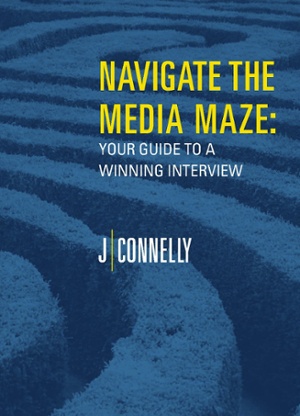
Whether you call it touching base, circling back, checking in or closing the loop, following up is a fact of life. If you're seeking approval, feedback, a favor or even just acknowledgement, following up without being a pest is a necessary skill for today's communications professionals.
But how do you get your ask to the top of someone's to-do list? We polled the masters of email—our own publicists, media contacts, salespeople and marketing peers—to share their best tips for getting attention and driving individuals to action. Read their advice below.
1. Be polite but get to the point.
Niceties are, well, nice, but if your subject and first line of an email don't have a direct ask in them, your message is moving to the bottom of the pile. Start with the "TL;DR" and provide more detail from there.
The general guideline for a "following up" email is:
Open with the context.
Writing "Just following up on my pitch" may not be helpful for a journalist getting dozens of story ideas per day. Include a company or spokesperson name and a significant detail ("Any interest in fly fishing with our new CFO?") to improve your odds of getting a response.
Define the ask.
What is it you need? A simple yes or no? Guidance on next steps? Scheduling options for an in-person meeting? Get specific and be crystal clear about what will help you along. Often the best way to get someone's attention is to let them know how they can help you (and get your emails out of their inbox).
Close by highlighting what's in their best interest.
How will helping you help your contact? If you can tell them how your request will help meet their own goals, you're more likely to get a positive outcome.
2. Set a timeline.
The number of tasks most people are attempting to get to every day is astronomical. If your request can wait a day or a week, say so. It gives the person you're following up with time to think about what you need, do some research, get additional input or just clear another pile of work off their desk. You also gain instant kudos for not sending intermittent "checking in" emails while you await their reply.
3. Change up your approach.
Copy and pasting an email and giving it a few small tweaks is a sure-fire way to get all of your messages on a "do not read" list. Try connecting via phone or text, or in person if that's an option. If you're routinely following up with the same individual, like a client contact, ask them what method works best for them and use that as your starting point. No two people are the same, so their communications styles are going to differ. Be flexible and willing to adapt.
4. Check your mental state.
It's easy to get frustrated when it feels like you're talking to a brick wall. But the surest way to get on someone's bad side is to let your emotions creep into the tone of your message. Sure, it's annoying when you're not getting a response. But being passive aggressive (or aggressive aggressive) isn't going to help you in the long run. If you can't get into a mental state that's respectful, polite and humble, leave the follow up for a time when you are in the right frame of mind.
5. Know when it's time to move on.
Many people won't want to give you a firm "no," preferring instead to let your messages go unanswered. If it's been weeks of radio silence, it's okay to send one final message asking if your contact would prefer you stop reaching out at all. Most people will either take the opportunity to let you know if that's what's best for them or to give you more detail on why they're not able to manage your request.
6. Say thank you!
Even and especially if you get a final brush off from a client or prospect, you should still let them know you appreciate their time and attention. We're all busy, and it's easy to just let things drift. If someone gives you the courtesy of a definitive answer, you should thank them for it—and then pay it forward to anyone following up with you!
Got any other tips for following up with clients, prospects, journalists or coworkers? Leave them in the comments below.





Let’s Connect
Ready to build, grow, manage and protect your brand? Complete the form below to discuss how we can help.